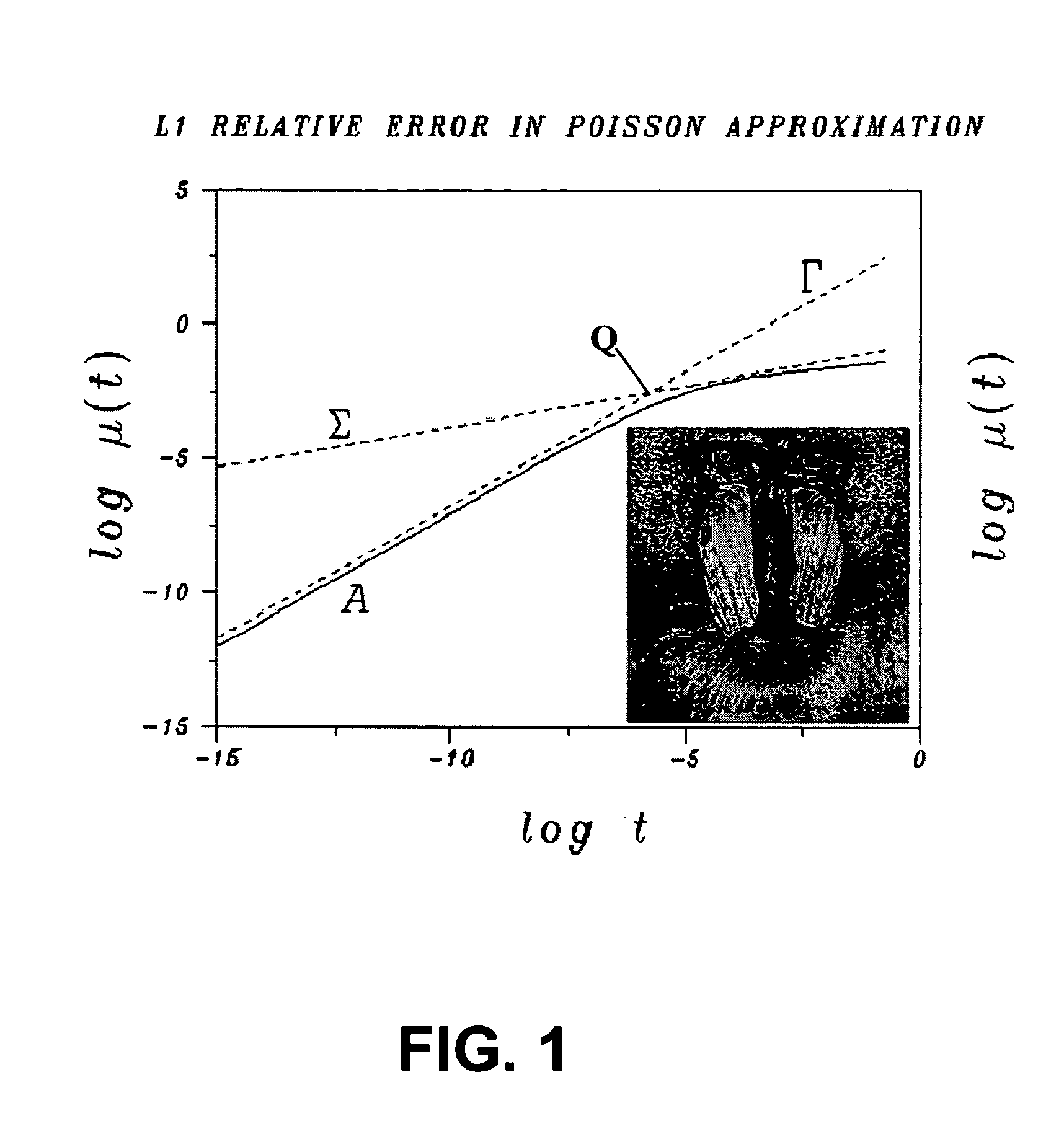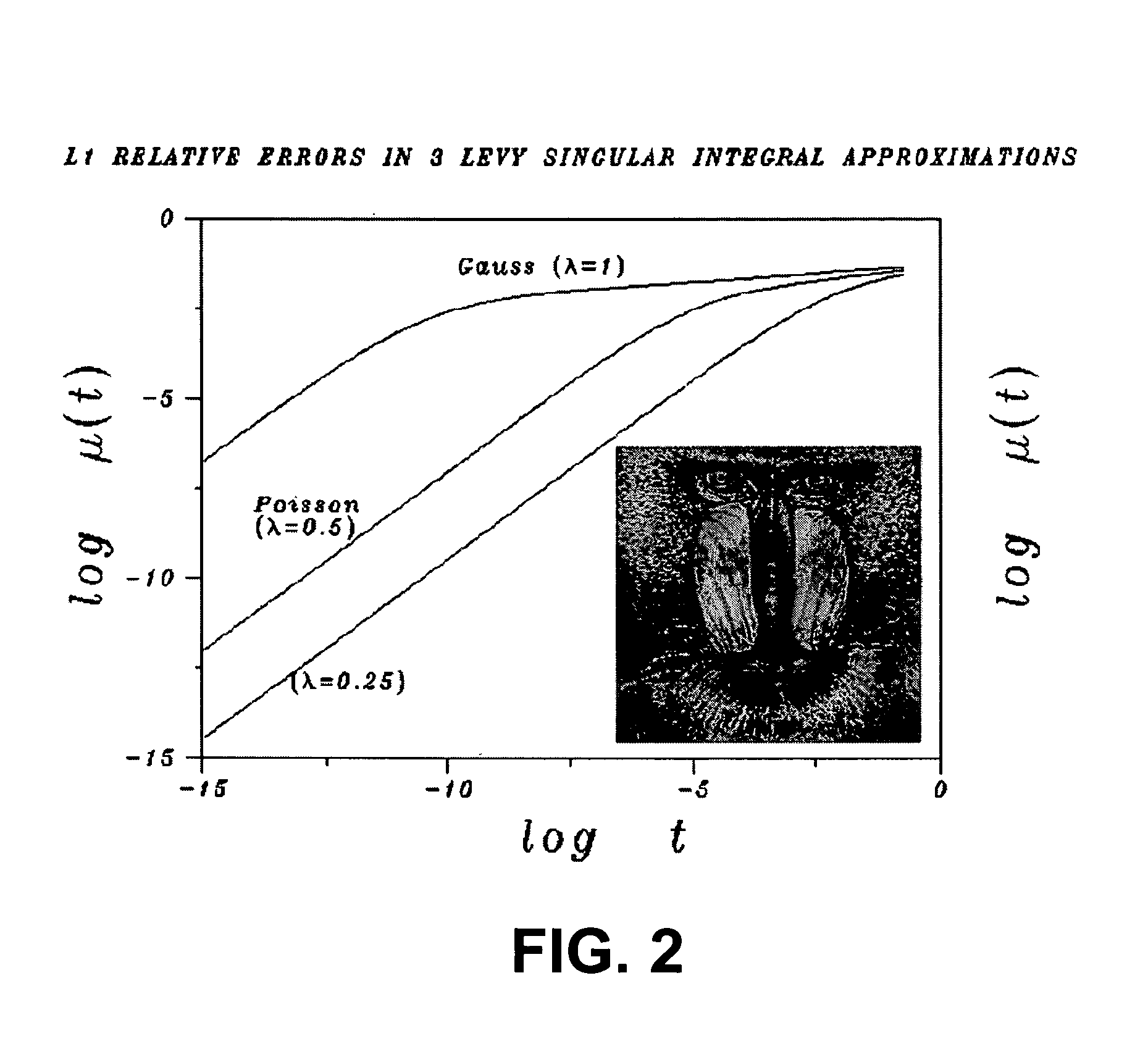Singular integral image deblurring method
a single-integral, image-based technology, applied in image enhancement, image analysis, instruments, etc., can solve the problem of delicate estimation of image lipschitz exponent a, and achieve the effect of avoiding noise-induced graininess and unacceptable texture loss
- Summary
- Abstract
- Description
- Claims
- Application Information
AI Technical Summary
Benefits of technology
Problems solved by technology
Method used
Image
Examples
Embodiment Construction
It is to be understood by persons of ordinary skill in the art that the following descriptions are provided for purposes of illustration and not for limitation. An artisan understands that there are many variations that lie within the spirit of the invention and the scope of the appended claims. Unnecessary detail of known functions and operations may be omitted from the current description so as not to obscure the present invention.
The present invention is directed to a two-part image deblurring method having a classification module for classifying image smoothness and an image deblurring module, that are both based on singular integral operators and Fast Fourier Transform algorithms. Given a square image f(x, y), the present invention includes a first method for determining a Lipschitz exponent a of the square image, for a particular user-selected LP norm. This determination implies that the given image belongs to a specific Lipschitz space Λ(α, p, ∞). In addition, for a specif...
PUM
 Login to View More
Login to View More Abstract
Description
Claims
Application Information
 Login to View More
Login to View More - R&D
- Intellectual Property
- Life Sciences
- Materials
- Tech Scout
- Unparalleled Data Quality
- Higher Quality Content
- 60% Fewer Hallucinations
Browse by: Latest US Patents, China's latest patents, Technical Efficacy Thesaurus, Application Domain, Technology Topic, Popular Technical Reports.
© 2025 PatSnap. All rights reserved.Legal|Privacy policy|Modern Slavery Act Transparency Statement|Sitemap|About US| Contact US: help@patsnap.com



